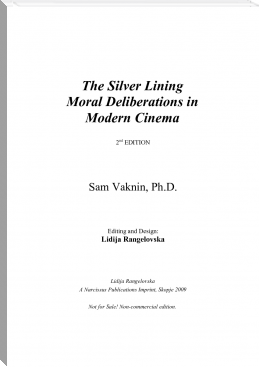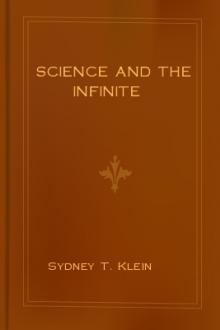Notes Of A Dead Man Sequel (Notes - #3) - Clive Cooper (e book reader android TXT) 📗

- Author: Clive Cooper
Book online «Notes Of A Dead Man Sequel (Notes - #3) - Clive Cooper (e book reader android TXT) 📗». Author Clive Cooper
Addendum: Additional objects reported, Overseers considering conversion of ADRX-19 to a dedicated recovery and containment facility. Reports may need censorship for reasons of security.
Jonathan Ball's Proposal
Item #: SCP-001
Object Class: Keter
Special Containment Procedures: To date, no adequate containment procedure has been developed to deal with the possible threat posed by SCP-001. This is due, in part, to the controversial nature of the item and debates concerning the necessity of its containment. This controversy is reflected in the item’s changing object class and the procedures utilized in its containment. The current administration, despite charges of paranoia, has classed the object Keter, while requesting permission for a higher object class to be created and applied uniquely to this item, considering it to be the most dangerous of all known or possible items. The reason for this classification and changing attitudes towards SCP-001 are dealt with in the description and notes.
At present, SCP-001 is located in a code-locked briefcase made of a high-tensile reinforced polymer. The room and briefcase are monitored at all times by security cameras. The briefcase cannot be opened without unanimous special clearance from all current O5 officers. The briefcase itself is stored in a small, fully lit, single-room off-site building erected in ███ ██████ ██████. Class D personnel are posted to guard the building but may not enter without the aforementioned agreement from the O5 officers, under threat of immediate termination. This off-site building exists for the sole purpose of housing SCP-001 and is wired for detonation in an emergency situation.
It is the opinion of the current administration that SCP-001 represents the greatest threat to national and global security known to exist. Nevertheless, due to special circumstances regarding its mode of function, further research on the item is disallowed, despite its promotion in the past, when SCP-001 was contained in minimum security conditions.
Description: SCP-001 is a simple sheaf of papers, stapled together in the top left corner. The top sheet is a covering sheet reading simply, “Confidential Report on Special Items—Classified.” The number of subsequent papers stapled to this covering sheet is indeterminate, and have ranged from three to thirty. The report is unsigned and its origin is unknown.
The first appearance of this report was on ███████ █, ████, when it appeared on the desk of ████████ █████ (deceased). The report at that time described “The ‘Living’ Room” (SCP-002). Shortly after reading the report with incredulity, ████████ █████ was contacted by phone regarding said item. The next time ████████ █████ perused SCP-001, it described not “The ‘Living’ Room” but “Biological Motherboard” (SCP-003). ████████ █████ immediately closed SCP-001, thinking it was a different report, and searched for the original report on SCP-002. Not finding it, he again opened SCP-001, and this time it described not SCP-003 but “The 12 Rusty Keys and the Door” (SCP-004). ████████ █████ closed the report once more and opened it immediately, to read of “Skeleton Key” (SCP-005). It is not known what the next actions of ████████ █████ might have been. At varying times following this incident, the aforementioned items were discovered.
Insufficient research exists concerning the correlation between SCP-001 and all other known items. However, it has been established that every event regarding the discovery of a new SCP item has followed a report on that same item appearing beneath the cover sheet of SCP-001. The current administration regards this coincidence as proof of causal connection.
Additional Notes: Whether SCP-001 is to be regarded as an advance-warning system or whether SCP-001 itself is to be regarded as the creator of the items requiring special containment remains to be seen. However, the distinction is unimportant in the eyes of the current administration. The fact remains: no new SCP items appear unless SCP-001 is opened and read. It is for this reason that the current administration refuses to repeat the mistakes of the past, mistakes that have resulted in over one thousand SCP items coming to the knowledge of the SCP unit.
Arguments concerning the non-lethality of SCP-001 itself, its theoretically beneficial use as an SCP warning system, or its use as a progenitor of advanced biological and non-biological weapons have not swayed the current administration. Nor have arguments criticizing the extreme containment procedures employed in respect to an item that displays no nefarious qualities and is not animate as such. Critics are reminded that these procedures are intended not to contain the item itself, but to isolate it from human interaction, which is to be regarded as the true threat.
Although the current administration refuses to remove the object from isolation barring special authorization as noted above, past administrations have counseled daily with the item, and future administrations will no doubt counsel similar behavior. Nevertheless, it is the opinion of the current administration that, barring the destruction of SCP-001, it is to be contained until such a time when responsibility for its containment falls upon future administrations.
Qntm's ProposalItem #: SCP-001
Object Class: Safe
Special Containment Procedures: SCP-001 is to be kept locked along with all data pertaining to it inside the Primary Archival Vault on Sub-Level 1 of Site 10. The Vault is a custom-manufactured, reinforced concrete and steel, vertical octagonal prism (see Appendix U for full schematics) with a 2000-kg, 0.9-m-thick, time-locked access portal in the ceiling. The time-locking schedule should be classified and available only to Dr. Y. Mirski. Access is conditional on three-factor authorization (e.g. keycard+fingerprint+passphrase). SCP-001 is among the safest artifacts in the Foundation's possession and these measures are primarily intended to prevent theft.
Description: SCP-001 is a smooth, black, perfectly ellipsoidal (~15.1 cm x 15.4 cm x 16.5 cm) onyx gemstone with a mottled white pattern. Wrapped around its exterior, encompassing its equator and both poles, is a complex and layered fractal filigree of gold metal. The gold is sculpted into broad strokes at what is now usually agreed to be the lower or "south" pole of the object, but with increasing "latitude" the pattern becomes progressively more intricate. Near the "north" pole, also called the "lock" or "singularity" (see acquisition report, below), the pattern complexity progresses beyond the capability of optical or electron-beam microscopes to resolve. Further investigation is pending advances in microscopy technology.
The gemstone continuously emits a small quantity (~34.5007 to 34.5010 mW) of thermal radiation in the microwave range. As a result, the gold filigree is warm to the touch. The white mottled areas emit fractionally more radiation than the black onyx areas.
Other than this, SCP-001 is totally inert. It is opaque to all forms of electromagnetic and hard radiation, and, so far, indestructible (see log for Project Pluto, below). Its onyx/gold composition is guessed from visual inspection, since the taking of samples for chemical analysis has proven impossible.
Project Pluto Master Log
The following experiments have failed to open SCP-001:
conventional lockpicking brute force assault with hammer, chisel, sledgehammer, bolt-cutters, welding torch, bandsaw, etc. sustained heating to 5000 degrees Centigrade in industrial furnace (artifact reflected all thermal energy, did not increase in temperature) direct application of industrial cutting laser (~160 kW/cm2 concentrated on the "lock") (artifact reflected all energy) compression in vice, car crusher, hydraulic diamond-face press (all destroyed) application of corrosive acids and other highly-oxidizing compounds (no reaction) detonation of plastic and solid explosives up to 0.5 kt TNT-equivalent at point blank range (no effect) detonation of a 15 kt TNT-equivalent atomic warhead at point blank range [authorization granted retroactively by Dr. Mirski] (no effect)Project Pluto is to be immediately terminated. - Dr Hack
Project Pluto is ongoing with the full support of Foundation resources. - Dr Mirski
SCP-001 Acquisition Report
The earliest record of SCP-001 is in the handwritten journal of the minor Scottish aristocrat Sir Edwin Young, 3rd Baronet (1611-1677). As was customary at the time, Young kept a "Cabinet of Curiosities", a small room of artifacts of undetermined providence such as sculptures, preserved creatures, and trinkets. Young's journal includes references to his acquisition in 1654 of "ane bouned jew'l of onycs and filigree gold, of fineneſs beyond rational ſtatement" while travelling across the Mesopotamian desert. The journal indicates that SCP-001 was found buried in the ruin of "a bitter, blaſted place, older than days", or what Young took to be a temple to "a fearſome death god". SCP-001 was found encased in stone at the centre of four enormous runic stones. Young's journal includes a sketch of the most readable side of the most well-preserved stone, but he was unable to read the runes or find a scholar who could translate them.
Young's account of his journey to the location of the ruin is incomplete. It has not yet been located.
Young's "ſelections of curious providence" lay in storage for several centuries after he died. In 1805, his descendants donated SCP-001 to the Scottish National Museum in Edinburgh. The curators of the museum regarded SCP-001 as an ancient, fragile, and priceless example of ancient Sumerian metalworking. They therefore failed to discover its anomalous warmth, its indestructibility, or its impossible microscopic-scale construction. They were, however, able to identify the runes in Young's sketch as Tertiary Sumerian Cuneiform, circa 3400 BCE. Only a partial translation is possible:
with loss and ????? we/I ?????? [a noun] Apakht [probably a proper noun] on this ending/finality ?????????? joy + permanence [possibly 'protection']
Mr. McCandlish, who performed the translation, noted:
This appears to be some sort of incantation or "spell of containment". "Apakht" is the name of whatever is imprisoned within the gemstone.
SCP-001 was finally placed on semi-permanent display in 1949.
In 2003, Foundation staff observed that the mottled white patterns on the surface of SCP-001 resembled the cosmic microwave background, a pattern of microwaves encompassing the entire observable universe, as mapped by NASA's Wilkinson Microwave Anisotropy Probe earlier that year. Closer inspection showed the two patterns to be identical. SCP-001 (along with Baronet Young's journal) was immediately purchased by a Foundation front organization and transferred to Site 10 where Dr. Q. Hack and Dr. Y. Mirski performed initial routine analysis.
Research continues under the auspices of Dr. Mirski,





Comments (0)